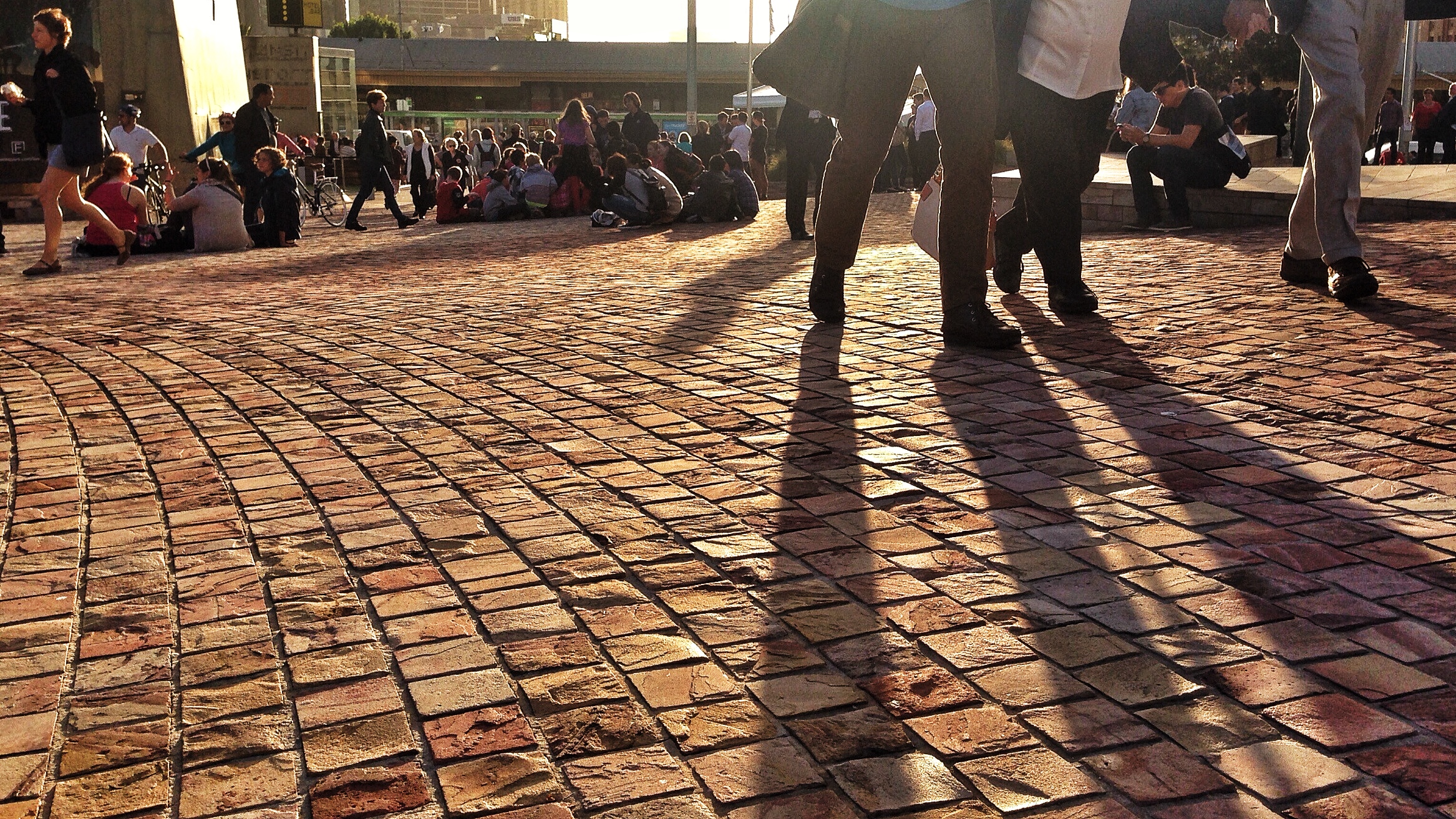
All great cities have public places that have become key elements of their identities, recalled in the tales of visitors, anchors for local people defining their home, and themselves.
When asked, ‘are you aware of Fed Square?’, nearly every Melburnian will say ‘yes’. In fact, 9/10 people in Melbourne will attest to having been there; most more than once. We’re all familiar with it.
For some, it’s a site that has been mired in controversy since 1996 when the Kennett Government announced that the former Gas & Fuel Building occupying the site would be demolished and an architectural competition would lead to the new square’s design. For others, it is a place that’s been part of the CBD landscape for as long as they can remember. More recently, it’s the site that will play host to a flagship Apple Store – a prospect that’s received both positive and negative commentary.
17 years since its grand opening, what place does Fed Square have in the minds and hearts of Australians? How do we perceive this now iconic place, and why?
Fed Square is a meeting place, a spot to linger and consider your next move. It’s a destination for captivating free events and community festivals. It’s also home to some of the city’s most revered arts and cultural institutions, reliably providing intellectually stimulating exhibitions, and welcome distractions for the kids.
With over 10 million people stopping by each year, Fed Square is actually many things to many people but its place identity is what it is to most people: where our perceptions align.
For over a million loyal Melburnians, about half of them students, the State Library Victoria is another asset that defines our city, but what defines the state library? Once a quiet sanctuary governed by rules both spoken and silent, it is now a bustling hub, alive with energy. Behind its austere facade, curated programs and guided journeys take the visitor back in time, but also forward. The library is a digital gateway to other great knowledge institutions across the world and, soon, its $90 million redevelopment will deliver workshops, studios and co-working spaces. It will also return some rooms to the original intention of quiet reflection and the reading of weathered book.
Library. Smells of old paper, soaring dome, youthful exploration, quiet contemplation, a glimpse into the future. An identity that resonates with our own. Whether we have had memorable experiences there. Or perhaps never been.
Place identity.
You can’t successfully manufacture an identity. This is an early lesson of young cities (those who visited the Emirates a couple of decades ago may nod knowingly). A new place borrows the identity of the places from where its inhabitants have come or it feels contrived and is branded as such. However, over time, we can identify and define a place, and differentiate if from others.
Place identity becomes relevant when a city, region or country wants to attract investment, residents, tourists and industry. All essential ingredients for a successful contemporary society.
How we perceive a place (city, nation, state) is defined by our reactions to its perceived strengths in the following place branding areas:
- Presence – brand awareness
- People – how the people who inhabit the city are perceived; the quality of leadership
- Potential – the perceived future potential of a city
- Prerequisites – the basic expectations such as education, accommodation etc.
- Pulse/vibe – the energy as expressed through cultural vibrancy, activities etc.
- Place – the physical, manmade and natural assets
At the agency we apply this framework to regions, cities, public spaces, property developments and health or aged care facilities.
Why getting it right matters.
Victorians feel a sense of ownership over Fed Square. We see it as ours; a place that we fought hard to get, after decades spent not having a place to converge as a city. Those years Melbourne was known as ‘the donut’, where nothing much happened in the centre.
Some of the city’s great moments have occurred at Fed Square: millions of Australians watched the 2008 Apology to Australia’s stolen generation and this great civic space was etched in our memories as a place for the people. We’ve watched the Australian Open, AFL Grand Finals and the Socceroos in the World Cup. Unforgettable.
Other great moments have happened too, only on a very personal level. Like seeing art that changed your view of the world and meeting the love of your life for coffee. My square, my life.
So, what impact does a few bricks, some aluminium cladding and a view? Well what would we miss if it were not there?
Social connectivity, social inclusion, education, safety and security, happiness, wellbeing, purpose. These are all measurable social impacts that we enjoy from a place like Fed Square and the state library.
The more we measure, the more we hope to understand and value the assets we, the people, created in our image.

